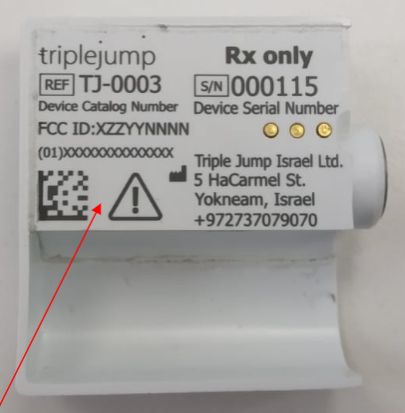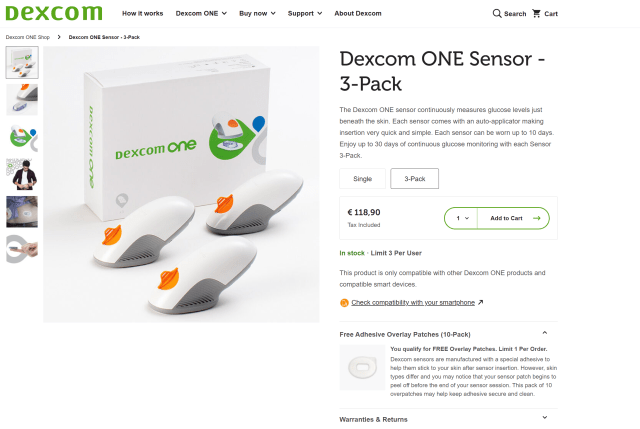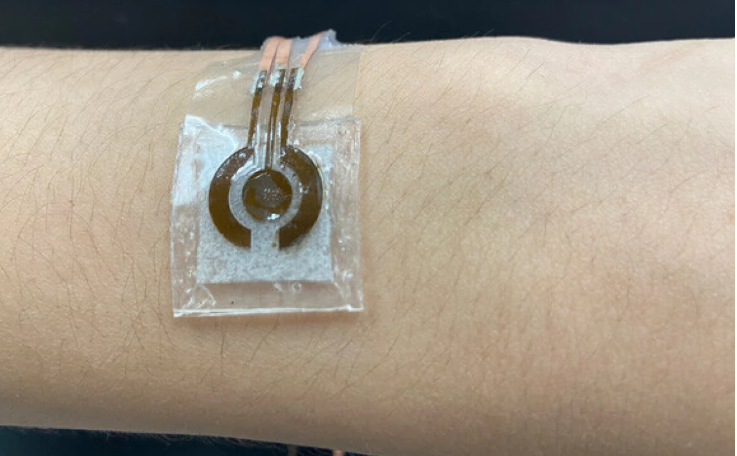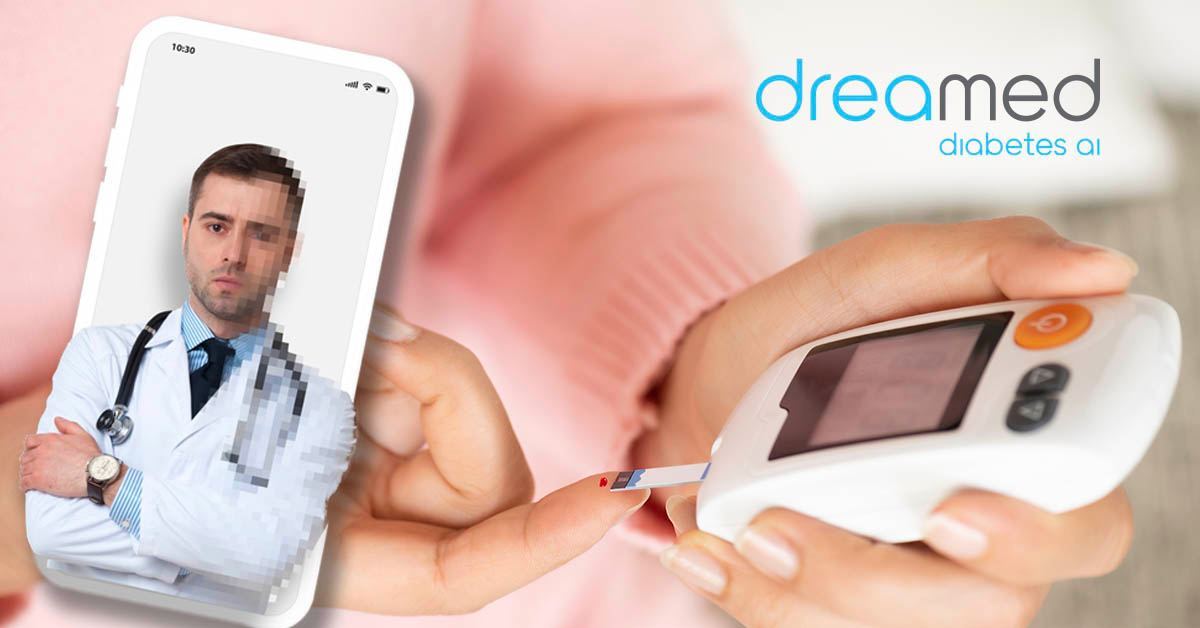STEM-CELL THERAPY FOR TYPE 1 DIABETES REDUCED PATIENT’S INSULIN NEEDS BY 91% was written by Ginger Vieira for BeyondType1.org, 21 October 2021.
 The first patient dosed with VX-880 — a stem cell-derived potential therapy to treat Type 1 diabetes — has experienced a 91% decrease in their daily insulin doses. In Phase 1/2 of its clinical trial, Vertex Pharmaceuticals Incorporated shared the staggering results after only 90 days of its ongoing investigational study, with the patient’s insulin needs reducing from 34 daily units down to 3 daily units. VX-880 is manufactured using proprietary technology from Vertex Pharmaceuticals, a global biotechnology company that has multiple FDA-approved medications for cystic fibrosis. With their sights set on a breakthrough treatment for people with Type 1 diabetes, VX-880 is a stem cell therapy approach that aims to restore insulin production and stable blood sugar levels.
The first patient dosed with VX-880 — a stem cell-derived potential therapy to treat Type 1 diabetes — has experienced a 91% decrease in their daily insulin doses. In Phase 1/2 of its clinical trial, Vertex Pharmaceuticals Incorporated shared the staggering results after only 90 days of its ongoing investigational study, with the patient’s insulin needs reducing from 34 daily units down to 3 daily units. VX-880 is manufactured using proprietary technology from Vertex Pharmaceuticals, a global biotechnology company that has multiple FDA-approved medications for cystic fibrosis. With their sights set on a breakthrough treatment for people with Type 1 diabetes, VX-880 is a stem cell therapy approach that aims to restore insulin production and stable blood sugar levels.
VX-880 works by essentially replacing the damaged insulin-producing cells in a person with Type 1 diabetes with healthy transplanted beta-cells. Because these are “allogeneic” cells — which means they come from outside the patient’s body — the patient must also undergo immunosuppression therapy to protect these transplanted cells from their body’s immune system.
“As a surgeon who has worked in the field of islet cell transplantation for decades, this approach, which obviates the need for an organ donor, could be a game changer,” said James Markmann, M.D., Ph.D., Professor of Surgery and Chief of the Division of Transplant Surgery at Massachusetts General Hospital.
Read more: STEM-CELL THERAPY FOR TYPE 1 DIABETES REDUCED PATIENT’S INSULIN NEEDS BY 91%
Surgeons Successfully Transplanted a Pig Kidney into a Human Patient In a World First was reported broadly and discussed by Ameya Paleja for InterestingEngineering.com, 20 October 2021.
 A surgical team led by Dr. Robert Montgomery at the New York University’s Longone Health facility successfully transplanted a pig kidney into a human recipient last month, The Guardian reported. This marks the first instance where a kidney has been transplanted from a different organism, scientifically known as xenotransplantation, and has not been rejected by the host’s immune system.
A surgical team led by Dr. Robert Montgomery at the New York University’s Longone Health facility successfully transplanted a pig kidney into a human recipient last month, The Guardian reported. This marks the first instance where a kidney has been transplanted from a different organism, scientifically known as xenotransplantation, and has not been rejected by the host’s immune system.
This successful demonstration offers a ray of hope to hundreds of thousands of Americans who are currently on waiting lists for organ transplants. The New York Times reported that about 90,240 individuals are waiting for a suitable kidney donor, and estimates suggest that 12 people die every day waiting for an organ. By sourcing these organs from pigs, we could shorten the wait and improve the quality of life for thousands of people.
Pig cells produce a sugar called alpha-galactose which is quite common in other mammals as well, except humans. So, when a regular pig organ is transplanted into a human, it comes with alpha-galactose, which is a foreign substance to the human immune system. The transplant is then attacked and eventually rejected by the human body.
A team of researchers at Revivicor, a biotech firm, engineered the genetic make-up of pigs so that they lack the gene that’s responsible for alpha-galactose. The team raised a herd of 100 genetically modified pigs at a contained facility in Iowa.
Interestingly, the recipient of the pig kidney was a dead human being. The deceased woman wanted to donate her organs after death, but since they were not suitable for donation, her family agreed to this experiment. Her body was kept on a ventilator following her death and then the kidney from Revivicor’s pigs was attached to large blood vessels outside her body. As blood flowed through the organ, the kidney worked, filtering waste and producing urine. The transplant was observed for a period of 54 hours during which urine and creatinine – a marker of kidney function, levels were normal, and no signs of organ rejection were observed, The New York Times reported.
Read more: Surgeons Successfully Transplanted a Pig Kidney into a Human Patient In a World First
Medtronic in talks to buy insulin pump developer Triple Jump was reported by Dulan Lokuwithana for SeekingAlpha.com,18 October 2021.
 Medtronic is in advanced talks to acquire Israeli startup Triple Jump for $300M. The U.S medical device maker had already made an investment in Triple Jump in 2015 with an option to acquire it. Founded in 2015, Triple Jump is developing a small insulin pump patch with mobile connectivity. A deal is likely to further expand Medtronic’s market presence in diabetes care.
Medtronic is in advanced talks to acquire Israeli startup Triple Jump for $300M. The U.S medical device maker had already made an investment in Triple Jump in 2015 with an option to acquire it. Founded in 2015, Triple Jump is developing a small insulin pump patch with mobile connectivity. A deal is likely to further expand Medtronic’s market presence in diabetes care.
Reports of Medtronic’s plans to acquire Triple Jump come shortly after it scooped up another new diabetes technology. In mid-September, Medtronic paid an undisclosed amount for the intellectual property rights to implanted infusion pump tech developed by Los Angeles’ Alfred E. Mann Foundation for Scientific Research. With that technology, insulin pumps can be made smaller and lighter, with more precise insulin delivery, MRI compatibility and occlusion detection. Medtronic is aiming to direct the new and improved pumps to support European patients with Type I diabetes.
Triple Jump, which is based in the northern town of Yokneam, was founded in 2015 by CTO Guy Shinar and Ofer Yodfat. Shinar was the CEO of X Technologies that was sold to Guidant for $200 million in 2003. Yodfat was also one of the founders of Medingo, which developed an insulin pump and patch and was sold in 2010 to pharma giant Roche for around $170 million. In 2012, Roche shut down Medingo’s operations in Israel and fired all 150 employees.
Triple Jump CEO Assaf Guy denied the deal in a call with Calcalist and said there are no ongoing negotiations. Triple Jump is developing a unique small insulin pump patch that is placed on the patient’s body. The patch has mobile connectivity capabilities and will be included in a future artificial pancreas system.
We come DexcomONE…. (Sorry Faithless….) was posted by Tim Street on his blog, Diabettech.com, 17 October 2021.
 DexcomONE. Something new from Dexcom. And boy doesn’t that applicator look like a Dexcom G6… But it’s only been talked about in a few places, and most notably, it doesn’t seem to be in the broader Diabetes news. Why wouldn’t it be? Well there may be some good reasons for this.
DexcomONE. Something new from Dexcom. And boy doesn’t that applicator look like a Dexcom G6… But it’s only been talked about in a few places, and most notably, it doesn’t seem to be in the broader Diabetes news. Why wouldn’t it be? Well there may be some good reasons for this.
Firstly, it’s only been launched in a few countries. At the time of writing these are: Bulgaria, Lithuania, Latvia and Estonia. And soon Croatia, so it’s limited in terms of access and that’s why you can’t find it. But when you do, you discover that the price is a little different from the G6. In the UK, this is what you’d pay for three sensors:
The major differences between Dexcom G6 and Dexcom One relate to the app. The list below is pretty clear:
-
- There is no Dexcom Share, so caregivers are unable to follow a user;
- It has a single bluetooth connection, i.e. unlike the G6 which has two, one for the phone and one for a pump/receiver, it will only connect to a single alternative device;
- The app contains no predictive alerts;
- The included Glucose reports are much more clarity like than on the G6 app, which doesn’t have anything like this;
- The codes for the ONE start with a different character compared to the G6;
- It is not possible to calibrate the ONE
From this, we can see that you’re paying half the price, but losing some key features. For many the lack of follow and single bluetooth connection won’t be a big issue but there are plenty of people who will be aghast at this. And finally, no calibration. While many might think that this is a big no-no, Dexcom have in the past said that they originally were going to release the G6 with no ability to calibrate, as it wasn’t required, but changed their minds with user feedback.
Read more: We come DexcomONE
Skin-adhered sensor tracks blood glucose levels via its wearer’s sweat was reported by Ben Coxworth for NewAtlas.com, 15 October 2021.
 Under development at Pennsylvania State University as described in a paper recently published in the journal Biosensors and Bioelectronics, a low-cost sensor, about the size of a US quarter-dollar coin, is being designed to measure glucose levels in the wearer’s sweat. Although the glucose concentration in sweat is about one one-hundredth as much as that in the bloodstream, there is nonetheless a consistent correlation between the two.
Under development at Pennsylvania State University as described in a paper recently published in the journal Biosensors and Bioelectronics, a low-cost sensor, about the size of a US quarter-dollar coin, is being designed to measure glucose levels in the wearer’s sweat. Although the glucose concentration in sweat is about one one-hundredth as much as that in the bloodstream, there is nonetheless a consistent correlation between the two.
The sensor incorporates a foam electrode, made up of laser-induced graphene coated with a nickel/gold alloy. Although graphene is very strong, chemically stable and electrically conductive, it isn’t glucose-sensitive on its own. Nickel is very glucose-sensitive, however, which is why it’s used in the electrode. The gold is added to reduce the risk of an allergic reaction to the nickel. Via capillary action, the device draws sweat in through a small inlet, and carries it into a microfluidic chamber filled with an alkaline solution. The system keeps that solution from coming into direct contact with the wearer’s body – this is an important consideration, due to the fact that alkaline solutions can damage the skin. Glucose molecules present within the sweat react with the solution, creating a compound that is channeled into the foam electrode. That compound reacts with the nickel, producing an electrical signal. Using either an external or a built-in device to measure the strength of that signal, it’s possible to ascertain the glucose level in the sweat, and thus in the bloodstream.
Read more: Skin-adhered sensor tracks blood glucose levels via its wearer’s sweat
Tired of Doing the Math Required to Constantly Adjust Your Insulin Doses? was reviewed by Devanshi Gupta for diaTribe.org, 18 October 2021.
 DreaMed’s artificial intelligence platform, Advisor Pro, which can deliver insulin dosing recommendations is now FDA approved for people with diabetes on multiple daily injections therapy. Because doing the math and analysis to make manual dosing adjustments can be both time-consuming and distracting, this platform can help simplify the process and get people access to quality care, remotely.
DreaMed’s artificial intelligence platform, Advisor Pro, which can deliver insulin dosing recommendations is now FDA approved for people with diabetes on multiple daily injections therapy. Because doing the math and analysis to make manual dosing adjustments can be both time-consuming and distracting, this platform can help simplify the process and get people access to quality care, remotely.
The FDA recently approved DreaMed’s Advisor Pro Platform for healthcare providers, for people with type 2 (ages 10 and up) and type 1 diabetes (ages 6 and up) who are on multiple daily injections (MDI) therapy. The Advisor Pro Platform is an artificial-intelligence, diabetes-care platform that allows your healthcare team to provide insulin-dosing recommendations based on your continuous glucose monitoring (CGM) or blood glucose meter (BGM) data – which they receive through data management software like Tidepool or Glooko.
For those using an insulin pump, the platform can also provide recommendations on your basal rate, insulin-to-carb ratios, and correction factors. Your healthcare provider then reviews these recommendations and sends them to you via the free Advisor Pro app, the Advisor Pro web platform, email, or your Glooko app. Because the Advisor Pro platform requires sign-off from your healthcare provider in order to provide dosing recommendations, it’s only available for those whose providers use this technology.
Read more: Tired of Doing the Math Required to Constantly Adjust Your Insulin Doses?
FDA Releases Proposed Rule for Over-the-Counter Hearing Aids was reported by Joyce Frieden for MedPageToday.com, 19 October 2021. This will allow direct-to-consumer sales for patients with mild-to-moderate hearing loss.
 The FDA on Tuesday issued a proposed rule to implement the sale of over-the-counter (OTC) hearing aids to patients with mild-to-moderate hearing loss, with Health and Human Services (HHS) Secretary Xavier Becerra saying the rule “takes us another step closer to the goal of making hearing aids more accessible and affordable.”
The FDA on Tuesday issued a proposed rule to implement the sale of over-the-counter (OTC) hearing aids to patients with mild-to-moderate hearing loss, with Health and Human Services (HHS) Secretary Xavier Becerra saying the rule “takes us another step closer to the goal of making hearing aids more accessible and affordable.”
“For some 30 million Americans who suffer hearing loss, safe, effective and high-quality hearing aids are way too often out of their reach because of the price tag,” Becerra said on a phone call with reporters. “I say that as the son of a mother who has had to go through a number of hearing aids, and is still out several hundred dollars, and is trying to get [the money] back from one of the manufacturers … For those who have experienced mild or moderate hearing loss, this is going to be great news for you.”
The proposed rule would implement a law known as the Over-the-Counter Hearing Aid Act, passed by Congress in August 2017 as part of the FDA Reauthorization Act. The law gave the FDA 3 years to issue regulations establishing a category of OTC hearing aids to be sold online and in retail stores to adult patients with mild-to-moderate hearing loss. The law differentiated hearing aids from “personal sound amplification products (PSAPs) intended to amplify sound for non-hearing impaired consumers in situations including hunting and bird-watching.”
Why is this important? Diabetes can lead to nerve damage that affects many parts of the body, including your hands, feet, eyes, and kidneys. Diabetes can also cause nerve damage in your ears. Over time, high blood sugar levels can damage small blood vessels and nerves in the inner ear. Low blood sugar over time can damage how the nerve signals travel from the inner ear to your brain. Both types of nerve damage can lead to hearing loss. Hearing loss is twice as common in people who have diabetes as it is in people of the same age who don’t. Even people with prediabetes (blood sugar levels higher than normal but not high enough yet to have type 2 diabetes) have a 30% higher rate of hearing loss than people with normal blood sugar levels. CDC on Diabetes and Hearing Loss
Read more: FDA Releases Proposed Rule for Over-the-Counter Hearing Aids


I categorically deny that I am in talks with Medtronic to purchase http://www.RADiabetes.com for 43 million dollars in cash and securities. I will confirm that they sent me a shirt and a mug and at the same time retained the right to acquire my website.
In a separate statement, Sheryl Phillips has announced that she has extended regulatory approval for me to sell http://www.RADiabetes but she has stated that I cannot pay more than $100.00 to get rid of it.
just saying.
You … and Sheryl, make me literally laugh out loud!!!